Project // Omoikane's Legacy - Quantum Mechanics (Part II)

Project // Omoikane's Legacy
About Science and Philosophy.
Quantum Mechanics
Part II: A Brief Insight into Quantum Phenomena
In the first part of this essay about quantum mechanics I have assembled a concise collage depicting the discovery and development of modern quantum principles. No matter which of the many interpretations of quantum mechanics you prefer, quantum physics can give rise to pretty weird phenomena. Thus, now we shall take a more practical approach to quantum physics and explore some real life quantum effects. It took a while to compile this article as I've been experimenting a lot with different visualization techniques and simulation methods.
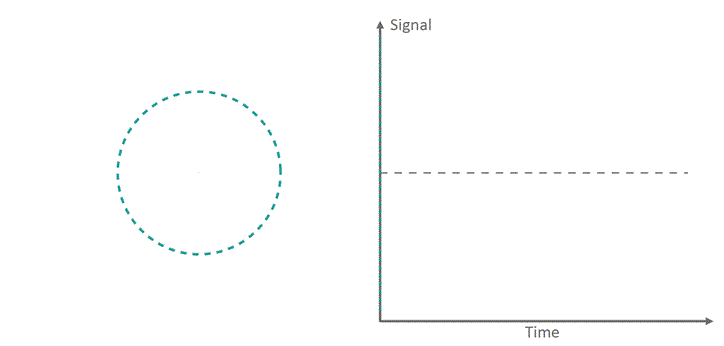

Most people associate quantum mechanics with the Heisenberg uncertainty principle. Even tough it plays an important role in explaining many quantum effects, it is just a single aspect of the underlying theory. The principle itself states that there exists a lower limit of how certain you can determine the location versus momentum of a particle. When you know exactly where your particle is located, there is no way of telling how fast it travels and vice versa. The basic principle behind this is quite intuitive: If you look at an object from far away, you will most probably have problems identifying its exact location, however you can very easily trace its movement and therefore get a good feeling for its velocity. On the other hand, when you are looking at the object from extremely close range, you might be able to pin point its location very accurately as passes you by, but it will be difficult to make out its exact velocity as it enters and leaves you field of view way too fast. A more accurate way of explaining the origin of the balance between location and momentum lies within something I mention way at the beginning of this discourse. Remember that a wave can be understood as the superposition of many individual oscillating components each with a specific frequency and amplitude. Momentum and location behave surprisingly similar to time and frequency, i.e., momentum is like a 'spatial frequency' (instead of the temporal one). When we fix the velocity of a particle to a single value our associated wave function is comprised of only one oscillation over time. For any given point in time the wave function will globally take on the same value. It is equally probable to find the particle in every point in space. Conversely, when oscillations of all frequencies and equal amplitudes are overlapped, the individual hills and valleys will cancel each other out everywhere but at the origin as it is the only location where all oscillations start with the same value before they drift apart. In this case the location is fixed but the particle could have any momentum. A more formal approach to this relation between space, time and their frequency involves taking a closer look at the spectrum's functional dependence of the corresponding wave form. Imagine the waves, instead of going forwards through space and time, orbiting around a fixed center point. The revolution frequency with which the waves travel radially is slowly swept over a spectral range. For every frequency you determine the center of mass of the rotating wave during a complete oscillation span. See figures 7 and 8 for a visualization of the process. As long as the oscillation frequency of the wave does not match the revolution frequency, the hills and valleys will be spread out around the circle-like mesmerizing mandalas, moving the center of mass close to the circle's origin. This corresponds to a low amplitude in the spectrum. As the revolution frequency starts to match the oscillation frequency, things will line up und all valleys and all hills will end up on the same side. The center of mass is then drastically shifted away from the origin, representing a high spectral amplitude. The narrower your wave package is, the broader the range of revolution frequencies in which valleys and hills approximately coincide with each other. Consequently a narrow wave form leads to a broad frequency spectrum and vice versa. It is a general property of the operation transforming a wave form between its temporal/spatial representation and its frequency spectrum (called Fourier transform). Thus, the Heisenberg uncertainty principle is embedded into the mathematic foundation of the wave-function description of quantum mechanics itself.
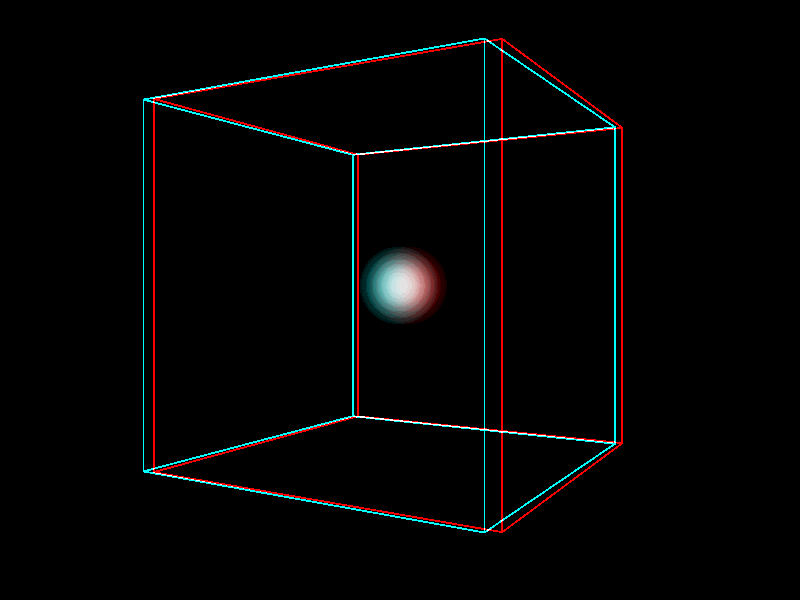

A property that immediately arises from the Heisenberg uncertainty principle is the so-called dispersion phenomenon. As a localized wave package, describing a particle, will always carry a multitude of different momentum components its wave function will run apart over time like a ball of ice cream melting in the summer sun. Consequently, if you place an electron into a box, as time progresses it will be more and more difficult to predict the electrons location within the container. Instead, at some point the electron could be anywhere with equal probability. Figures 9 and 10 show simulations of a wave function in a box demonstrating its dispersion. The narrower the initial localization, the more momentum components the wave package will contain, i.e. the faster it will explode into a blurry blob of wave function soup. This is the reason why you cannot focus a laser beam over longer distances. As the light wave is radially focused its spectrum broadens and it will ultimately force itself apart. By the way, the same process occurs when e.g. sun light hits particles of water. Upon entering a water droplet the different spectral parts of the light travel with approximately the same speed. Inside the medium they have quite different propagation speeds depending on their wave length. This happens because in vacuum (or thin media like air) the electro-magnetic fields can oscillate more or less freely. In water, however, the molecules influence the susceptibility (the ability of a material to polarize in response to the field) making it more difficult for higher frequency oscillations to traverse the medium. The light wave always has to push and pull against the inertia of the material's own electric and magnetic poles. Intuitively, this is more difficult as the movement happens faster. The shortest path through the rain drop for each color of light consequently is slightly different leading to a dispersion of the sun light... commonly known as a rainbow.
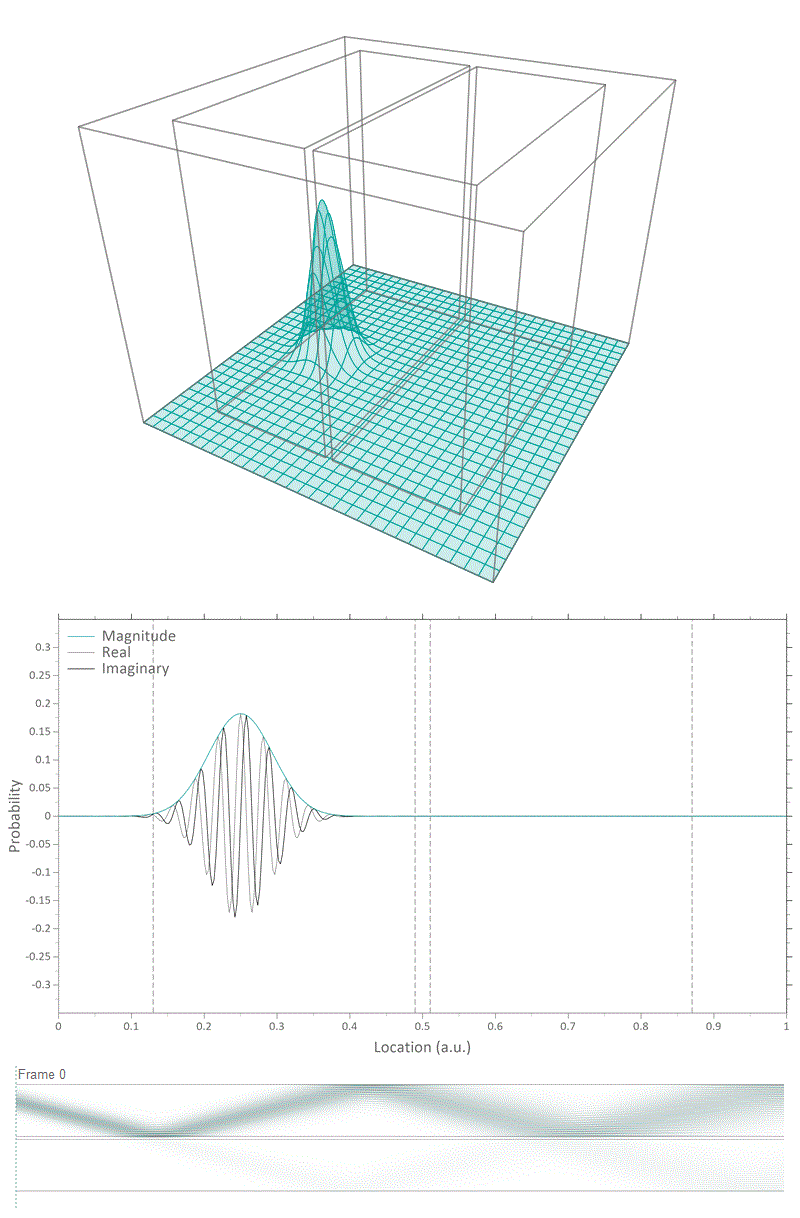
As another result of the non vanishing uncertainty of momentum and location, quantum mechanics allows for objects to overlap with each other. When a ball is thrown against a solid wall, it will simply bounce back. If the ball has sufficient energy it will transfer some of it into the wall, tipping it over, ultimately surpassing the obstruction with slightly less momentum. An electron shot into a barrier will also be reflected back or transmitted through depending on its energy compared to the obstacle. In contrast to the classical example though, even if it does not have enough energy to overcome the impediment it will still slightly overlap with it. Inside a sufficiently strong wall no propagation as a wave is possible (the electron wave function's phase vanishes) but the wave function is attenuated exponentially depending on the strength of the barrier (quite comparable to the Beer-Lambert law discussed in Part I). This phenomenon is called evanescence. Now comes the fascinating part: When the obstruction is not infinitely big, but has a finite size, the evanescent wave tail will reach the other side and start to propagate again in form of an attenuated second wave package. In other words, there will be a non vanishing probability to detect the electron on the other side of the wall even though if classically speaking the blockade is impenetrable. Figure 11 shows a simulation carried out to demonstrate this so-called tunnel effect. It is the driver of many nuclear processes as it allows for particles to escape their atomic nuclei even though from a classical point of view they are absolutely confined. In that sense, radioactive radiation is a macroscopically perceivable effect that directly arises from quantum mechanics.

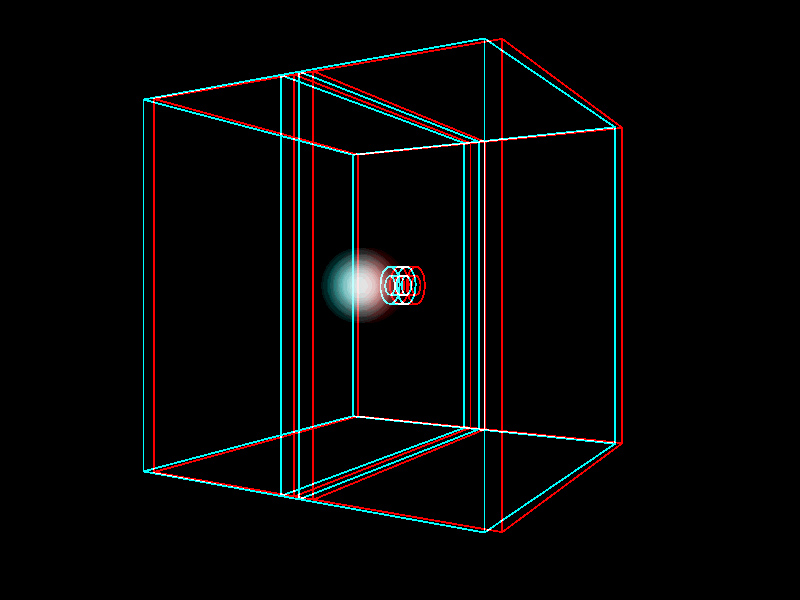
A famous historic experiment, highlighting another phenomenon resulting from quantum mechanics, is the so-called double slit experiment. When electrons are shot against a plate with two small slits in it, our classical intuition would dictate that on the other side we'd just see the shadow of the obstruction (i.e. no electrons except for where the slits are). However, since electrons in the quantum realm exhibit a wave-like behavior, something completely different happens. The partial waves coming from each of the slits will overlap. Their valleys and hills will amplify or extinguish each other depending on their position resulting in whats known as an interference pattern (a fan-like structure). Figure 12 shows a simulation of the experiment in comparison with a similar one using a plate with only one slit. In the latter case no immediate interference can be observed as only one wave is propagating into the right half. (Side note! For all of you who are exclaiming, 'but wait, there's more!', right now: I am very aware of the fact that the partial waves originating from the two edges of the slit will lead to a self interference no matter of the number of slits. I just didn't think that this information would help to understand whats going on here.) Figure 13 demonstrates the double slit experiment with radial geometry (ring shaped aperture) in three dimensions. By the way, the observation of the characteristic interference pattern was the first historical proof that matter can really exhibit a wave-like character as well. Just to make it clear once and for all: Wave or particle? Take a mug and look at it from the side. If you are not holding one of these fancy mugs, shaped like an animal or something inappropriate as they exist these days, you will most probably find that the mug will look remarkably rectangular (at least approximately). If not for your depth perception, you couldn't really be able to make out the shape of the full object just by looking at its outline like this. Now (make sure the mug is empty... I will not be held responsible for any third degree burns you might conduct while doing this with a cup full of boiling hot coffee) turn the mug so that you can look down inside of it, straight to the bottom. Surprise! Doesn't the same mug look awfully circular now, in stark contrast to our previously obtained results? Now tell me, is the mug more like a circle or rather like a rectangle? The answer is neither of both! It is a three-dimensional object that inherits the traits of both geometric shape into whats commonly known as a cylinder. Elementary particles like photons and electrons are like mugs (this statement without context will most probably spark some controversial discussion when shared with your coworkers). Depending on the type of interaction you are observing, you will find either particle-like or wave-like behavior. That does, however, not imply that any of the two are representative for the full object. In fact electrons, photons, etc. are something completely different we just lack a word for... an object of the quantum domain.
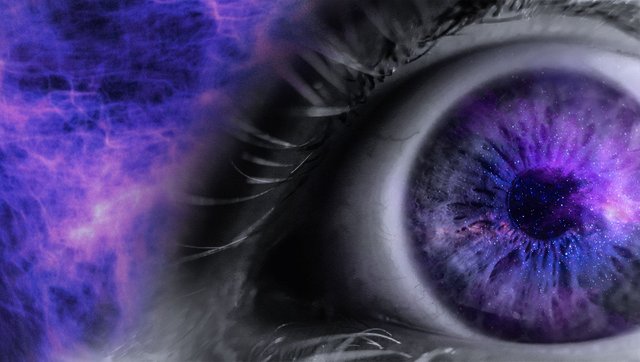
Things start to get really messy, when you try to outsmart the fuzzy nature of quantum physics. In theory you could install sensors at the slits and observe which electrons land where. However, as soon as you gain knowledge about the path an electron takes through the slits, its wave function collapses and you will no longer observe an interference pattern but the classical shadow of the slit plate. The Copenhagen interpretation of quantum mechanics explains this as a real transition from a non-physical wave functions to a classical, real particle. By observing the electron you destroy its quantum behavior. Disturbingly though, this collapse occurs even if you make a measurement after the electrons passed the slit plate, i.e., after the interference should have already taken place. This implies that the wave function's collapse traversed backwards in time as if the electrons knew in advance that someone was about to rip off their quantum masks to uncover their dirty wave-function secrets. Einstein himself once said: "Gott würfelt nicht!" (lit. "God does not play dice!") as he was a strict enemy of the thought that quantum events happen on a randomized principle. The conclusions of the so called delayed-choice experiments (where the wave function collapse happens after the interaction) violated his proposed idea of causality (no information transfer faster than the speed of light)... the key component of our understanding of reality. Especially when you look at entangled quantum states this becomes very obvious. When particles are e.g. created during the same physical event, they can become quantum mechanically entangled. This means that they share a single wave function describing the probability distribution of properties of both particles at the same time. Consequently, a measurement of one particle's properties collapses the wave function of both particles and fixes the properties of the second one instantaneously. Einstein therefore demanded, that there are hidden variables stored in the individual particles during the entanglement that predetermine the outcome of a later observation. Many experiments have been conducted which prove that the collapse of the entangled states really happens faster than light. Sadly for Einstein, experiments were also performed in which a certain additional degrees of freedom during the measurement was eliminated (e.g. the direction in which you measure the polarization of a photon... it is only specified by the observer). Since the entangled partners degree of freedom was changed accordingly during the observation, a predetermining through hidden variables could be dismissed as the observation scenario itself was ab initio unpredictable. Quantum states therefore lack what is known as locality, a physical property which dictates that an event can only influence its immediate surroundings. The causality of quantum events can be somewhat restored, because the observation itself can not happen faster than light. Even if the collapse of a wave function happens instantaneous, our knowledge about the state of the individual particles itself obeys the laws of general relativity theory as no real information can be transferred between the two entangled states. There exists however another much more unsettling problem. If the Copenhagen interpretation of quantum mechanics really is true, the universe itself is nothing but a fuzzy mess of probable ways to exist. Our sense of reality is just an illusion that arises from continuous observations of quantum states. What happens to the universe if we don't look? Does it even exist as a objective relativity outside our own consciousness or is reality just the individual result of the observer that cease to exist together with him? Is our sense of time just an arbitrary construct that arises from the way we perceive quantum mechanics? These questions are far beyond the border of philosophy, so it is debatable if we ever find a satisfying answer to them... no matter how deep we dig. Of course there exist other possible ways to construe quantum mechanics. However, in the end they all shift this final stretch of unnerving unknowingness into different shapes.
Science has turned from knocking apples off a tree to unbelievably complex, highly parallel computer codes and multi-billion dollar accelerator facilities. However, we are still only scratching the surface and with every answer a thousand new questions are stirred up. Physics has come to a point once again, where the underlying mathematics intrinsically provable do not yield conclusive answers anymore. We can only find clever ways to approximate what we cannot express. It makes you wonder whether or not we are chasing the white rabbit and there (most probably) is no bottom to this rabbit hole. No one has ever seen an electron or a quantum field in person... they are just the best diagnosis for the symptoms we witness. The seam between nature and philosophy has become very blurry and as you've seen, simple observations of our universe lead to more and more dramatic tremors of the foundation our understanding of reality itself is based upon. And we did not even touch any spiritual or esoteric topics... Yet, you should not ask questions about whether research makes sense or is productive. Apart from the fact that we'd still be sitting around in the cold and dark, living in caves, if people didn't at some point start to investigate the magical apparition later known to us as fire, it simply is human's nature to be curious. The unsolved mysteries that lurk in the deep, dark void that surrounds humankind has always been the motor that kept us progressing forwards (for the better or the worse). Even though it might be a cold comfort, in the end, satisfying this overwhelming urge to explore and understand fills our lives with some faint sense of purpose no matter whether you believe in something beyond the rational or not. At least we can be certain that things will never stop being interesting as the amount of knowledge yet to gain seems nearly unlimited. Stay tuned.
Congratulations @thecodealchemist! You received a personal award!
Click here to view your Board
Congratulations @thecodealchemist! You received a personal award!
You can view your badges on your Steem Board and compare to others on the Steem Ranking
Vote for @Steemitboard as a witness to get one more award and increased upvotes!